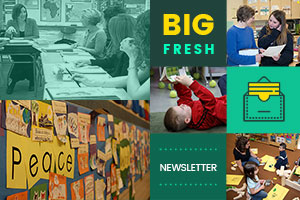Making sushi is an art, and experience is everything.
Nobu Matsukisa
Yoshimi Hayakawa moved to Galway, Ireland to learn to speak English in 2001. After settling in and seeing how enthusiastic her new friends were about her sushi, she decided to start selling it at the city market. The problem was that strangers who stopped by weren’t interested. The raw fish wrapped in seaweed looked pretty, but strange. It was like nothing they’d eaten before, and Yoshimi didn’t know how to tempt them to try it.
In desperation one week, she changed up her sushi, substituting turnips or cabbage for the rice. Voila — Irish sushi was born. Suddenly the dish had ingredients the locals could recognize and tastes they were familiar with. Seventeen years later, Hayakawa runs an acclaimed sushi restaurant known for its inventive and exotic menu, and she has trained many sushi chefs who have succeeded throughout Ireland.
It’s a basic principle in life — it takes time and incremental steps to acquire and accept the unfamiliar. Research shows toddlers need to try a new vegetable 17 times before they will eat it readily. It’s why “If You Like” baskets are so popular in classroom libraries. If you like Junie B. Jones, you’ll like Judy Moody. If you like Matt Christopher, you’ll like Dan Gutman. You know and like cabbage, so you’ll like this sushi, even if it looks a little strange.
What do you like? It’s probably the most important question teachers ask in getting to know students, because it’s the first step in learning how to guide them gently from what they know and love to new possibilities.
This week we look at one big way teachers get to know what students like and introduce them to new tastes through read alouds. Plus more as always — enjoy!
Brenda Power
Founder, Choice Literacy
Free for All
[For sneak peeks at our upcoming features, quotes and extra links, follow Choice Literacy on Twitter: @ChoiceLiteracy or Facebook: http://www.facebook.com/ChoiceLiteracy or Pinterest: http://pinterest.com/choiceliteracy/]
Franki Sibberson shares strategies for incorporating more nonfiction into read-aloud times throughout the day:
http://www.choiceliteracy.com/articles-detail-view.php?id=2875
Maria Caplin explains how read alouds do double duty in her fifth-grade classroom, as they build a love for story and help students master key literacy and content-area standards:
http://www.choiceliteracy.com/articles-detail-view.php?id=2764
It’s March, which means it’s time for March Book Madness. This year’s theme is Compelling Characters. You can read all about it here:
http://marchbookmadness.weebly.com/
For Members Only
Now is the time to start planning how to make the last month of read alouds truly special for your class. Bitsy Parks explains how the ending weeks of read alouds in her first-grade classroom are designed to celebrate learning and shared experiences from the entire year:
http://www.choiceliteracy.com/articles-detail-view.php?id=2831
Christy Rush-Levine finds administrators are questioning the value of read alouds, especially with older students. She shares how she uses the picture book Love in her middle school classroom to launch challenging discussions about timely themes:
http://www.choiceliteracy.com/articles-detail-view.php?id=2923
In this week’s video, Katrina Edwards uses read alouds as mentor texts for writing minilessons in her first-grade classroom. In this example she focuses on character feelings:
http://www.choiceliteracy.com/articles-detail-view.php?id=2716
Melanie Meehan looks at the issue of engagement through the lens of student questions during read alouds, and shares a strategy to provoke more thoughtful student participation:
http://www.choiceliteracy.com/articles-detail-view.php?id=2917
In an encore video, Aimee Buckner uses a read aloud to help fifth-grade students hone their notetaking skills while reading nonfiction narratives:
http://www.choiceliteracy.com/articles-detail-view.php?id=653
That’s all for this week!



